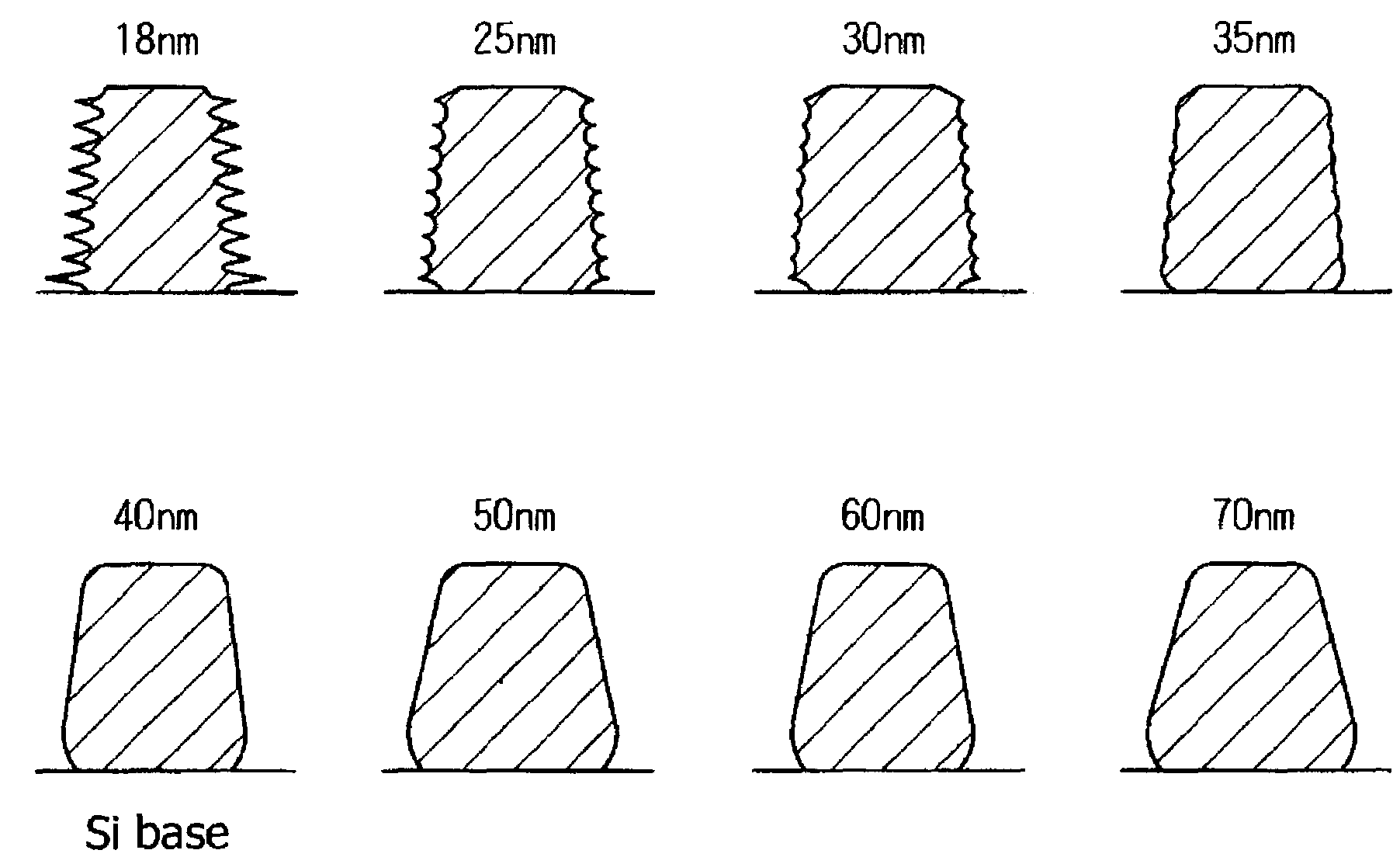Photoacid generating compounds, chemically amplified positive resist materials, and pattern forming method
- Summary
- Abstract
- Description
- Claims
- Application Information
AI Technical Summary
Benefits of technology
Problems solved by technology
Method used
Image
Examples
synthetic example 1
Synthesis of an Aqueous Solution of 2-Oxo-2-phenylethylthiacyclopentaniumbromide
[0189]The 2-bromoacetophenone of 4.97 g (0.025 moles) was dissolved in nitromethane of 9.5 g. Tetrahydrothiophene of 2.2 g (0.025 moles) was added at room temperature, and was matured as it is for two hours at room temperature. A reaction liquid was hardened by the progression of reactions. Solids were dissolved by adding 70 g of water and 50 g of diethyl ether. A water layer was separated and washed with 50 g of diethyl ether of 50 g so that lipophilic impurities were removed.
[0190]An anion exchange with various bisperfluoroalkylsulfoneimides was performed using this aqueous solution.
Synthesis of 2-Oxo-2-phenylethylthiacyclopentaniumbis(perfluoroethylsulfonyl)imide
[0191]When 9.5 g (0.025 moles) of bis(perfluoroethylsulfonyl)imide was added to the aforementioned aqueous solution of 2-oxo-2-phenylethylthiacyclopentaniumbromide, oily matter was separated therefrom. This oily matter was extracted by 1000 g ...
synthetic example 2
Synthesis of 2-Oxo-2-phenylethylthiacyclopentanium Bis(perfluoro-n-butylsulfonyl)imide
[0196]When 14.5 g (0.025 moles) of bis(perfluoro-n-butylsulfonyl)imide was added to the aforementioned aqueous solution of 2-oxo-2-phenylethylthiacyclopentaniumbromide, oily matter was separated therefrom. This oily matter was extracted by 150 g of dichloromethane. An organic layer was washed with 80 g of water four times, and the organic layer was concentrated by a rotary evaporator, thus obtaining 18 g of oily substance. The 50 g of diethyl ether was added to this oily substance for crystallization. Resultant crystals were subjected to filtration under vacuum and drying. As a result, 13.5 g of white crystals were obtained. The yield was 68%.
[0197]The obtained sample was subjected to a TOF-MS analysis. A cation mass peak of 207.3 and an anion peak of 579.9 were obtained. The mass of the cation coincided with that of 2-oxo-2-phenylethylthiacyclopentanium, and the mass of the anion coincided with th...
examples
[0201]An evaluation of sensitivity and resolution were carried out when sulfonium salts and iodonium salts represented by the following Formulas (PAG 1 to PAG 9) were added in resists.
[0202]
PUM
| Property | Measurement | Unit |
|---|---|---|
| Nanoscale particle size | aaaaa | aaaaa |
| Wavelength | aaaaa | aaaaa |
| Fraction | aaaaa | aaaaa |
Abstract
Description
Claims
Application Information
 Login to View More
Login to View More - R&D
- Intellectual Property
- Life Sciences
- Materials
- Tech Scout
- Unparalleled Data Quality
- Higher Quality Content
- 60% Fewer Hallucinations
Browse by: Latest US Patents, China's latest patents, Technical Efficacy Thesaurus, Application Domain, Technology Topic, Popular Technical Reports.
© 2025 PatSnap. All rights reserved.Legal|Privacy policy|Modern Slavery Act Transparency Statement|Sitemap|About US| Contact US: help@patsnap.com



